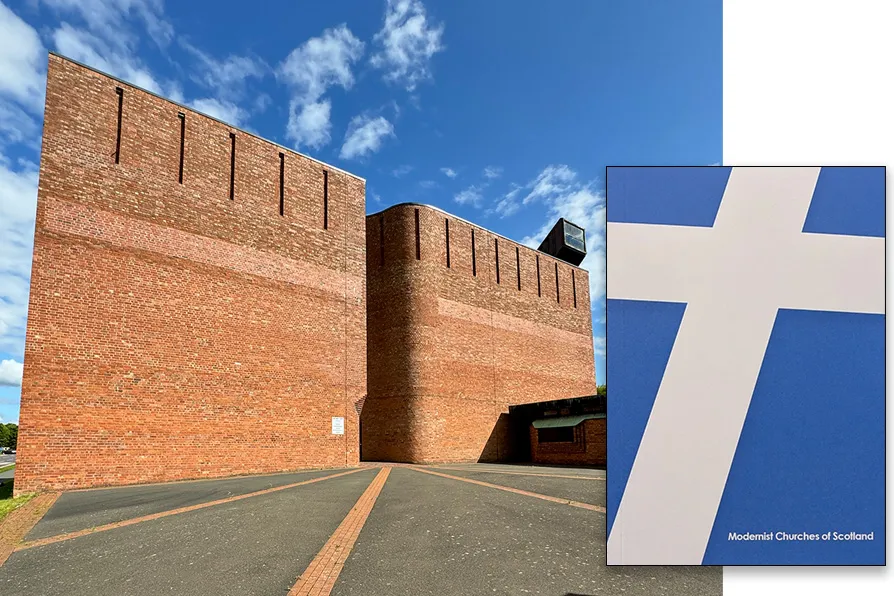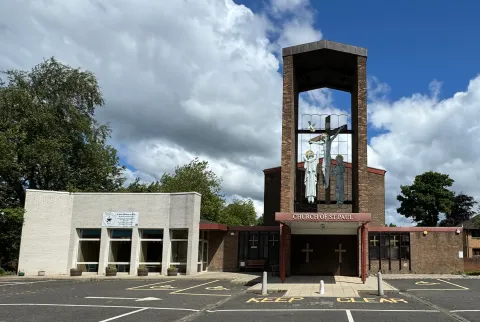MARIA DUARTE picks the best and worst of a crowded year of films
HENRY BELL notes the curious confluence of belief, rebuilding and cheap materials that gave rise to an extraordinary number of modernist churches in post-war Scotland

 St Bride's Roman Catholic Church, East Kilbride, Scotland; Gillespie, Kidd and Coia, 1964 [Pic: Matthew Dransfield]
St Bride's Roman Catholic Church, East Kilbride, Scotland; Gillespie, Kidd and Coia, 1964 [Pic: Matthew Dransfield]
Modernist Churches of Scotland
Matthew Dransfield, The Modernist, £9
IN the middle of the 20th century a kind of mania for newness took hold in Glasgow, Fife and beyond. Vast swathes of urban Scotland were demolished and populations were moved into high rises, new towns, and housing schemes. Motorways sliced through the cities, airports were built on the outskirts, tramlines and trainlines were torn up in favour of the bright future of the automobile. Concrete poetry and concrete architecture predominated.
And yet, amidst all this modernity and dislocation it is often forgotten that the twin establishments of the Catholic Church and the Kirk of Scotland continued to hold a vice-like grip on the population. In 1955, Billy Graham’s All Scotland Crusade saw more than 800,000 people attend services together at Kelvinhall, Hampden and Ibrox. This was not just a time of retained Chirstian values, but of growing faith. The vast majority of Scots were still members of a Christian Church well into the 1960s. Whilst society was transforming in many ways, the relation to church and god seemed as constant as it had been for a century.
This curious occurrence of a country radically rebuilding itself whilst maintaining a strict adherence to its organised religions led to a rich seam of brutalist and modernist churches across the central belt of Scotland. In part due to small budgets and cheap materials, in part due to adventurous modernisers in the churches, and in part due to the perception of the place of churches as essential to the schemes and new towns, but not aesthetically governed by them, some of the most exciting and experimental 20th-century architecture in the world can be found in the religious buildings of places like Cardross, Drumchappel and East Kilbride.
Many of the architects and artists were new arrivals to Scotland, first and second generation Germans, Jews, Estonians, and Italian Scots who wanted to break completely with the imperialist architectures and ideologies that had fractured Europe and led to them and their families building new lives and new buildings in Scotland. It is an irony that they found such great expression for this break with tradition in the construction of churches.
One of the greatest architects featured here, Isi Metzstein, enjoyed the fact that as a self-described “Jewish lapsed atheist” he was one of Scotland’s foremost designers of Christian churches with the firm Gillespie, Kidd & Coia.

Modernist Churches of Scotland, which Mathew Dransfield has published with The Modernist, is a charming pocket guide that explores some of the most extraordinary, beloved and reviled of Scotland’s modernist churches. Whilst one priest quoted in the book laments the disastrous flat roofs and lousy building materials, it is beyond doubt that the architecture featured here lifts the soul. And Dransfield is clearly entranced by it.
The book’s only downfalls are the single image for each church – thus no interiors or details, and the too brief – but well written and researched – blurbs that accompany each image.
It’s a book to whet the appetite, and encourage more pilgrims looking for the work of Metzstein, MacDonald, Spence and Schottz. Like the modernist churches themselves, this book will not be for everyone, but it is a small and idiosyncratic joy.
Modern Churches of Scotland is available from the-modernist.org

ANDREW FILMER welcomes the reopening of Glasgow’s landmark theatre after a seven-year transformation

BLANE SAVAGE recommends the display of nine previously unseen works by the Glaswegian artist, novelist and playwright

SYLVIA HIKINS casts an eye across the contemporary art brought to a city founded on colonialism and empire











